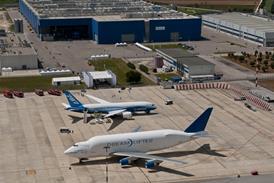Airbus believes there is "now an appetite" for Indian carriers to make greater use of widebodies in order to challenge overseas rivals for market share between the subcontinent and other regions.
Speaking to Flightglobal, Airbus India president Srinivasan Dwarakanath (Dwaraka) identified the India-North America market as one of the major battlegrounds.
He argues that the Airbus A330neo as "a great tool" for this market because "it will have the lowest cost per seat-mile" and offer "a reduction in fuel consumption of almost 14% as compared with the older A330s".
Flight Fleets Analyzer shows that Jet Airways is the only Indian operator that flies the A330. It has four -200s and four -300s in service, and has five -200s on order.
On routes between India and the rest of the world, 40% of traffic is carried by Gulf carriers. Generally, foreign carriers dominate the international market out of India, carrying 65% of the traffic.
Some of India's carriers use widebodies on thick routes connecting tier-one cities, such as Delhi-Mumbai. Dwaraka suggests that these widebody operations could be extended to international routes from tier-one cities.
He explains that airlines could stagger the use of widebodies and narrowbodies based on the popularity of different timings between domestic tier-one routes. For less popular slots, airlines could use narrowbodies on such routes, allowing widebodies to be deployed for international services.
The airframer acknowledges that widebodies have not been as popular in India compared with other markets globally. With newer single-aisle aircraft, airlines based in Delhi can serve "around two-thirds of the world’s population", notes Dwaraka.
For its "make in India" programme, meanwhile, Airbus intends to explore what it calls "vertical integration", with materials sourced locally.
"The aim is to try and see if we can create components from materials all in India, so that we can have a complete value chain in the country," Dwaraka adds.
At present, each aircraft coming off the assembly line has at least a component made in the subcontinent, ranging from doors to flap-track beams.
Source: Cirium Dashboard























